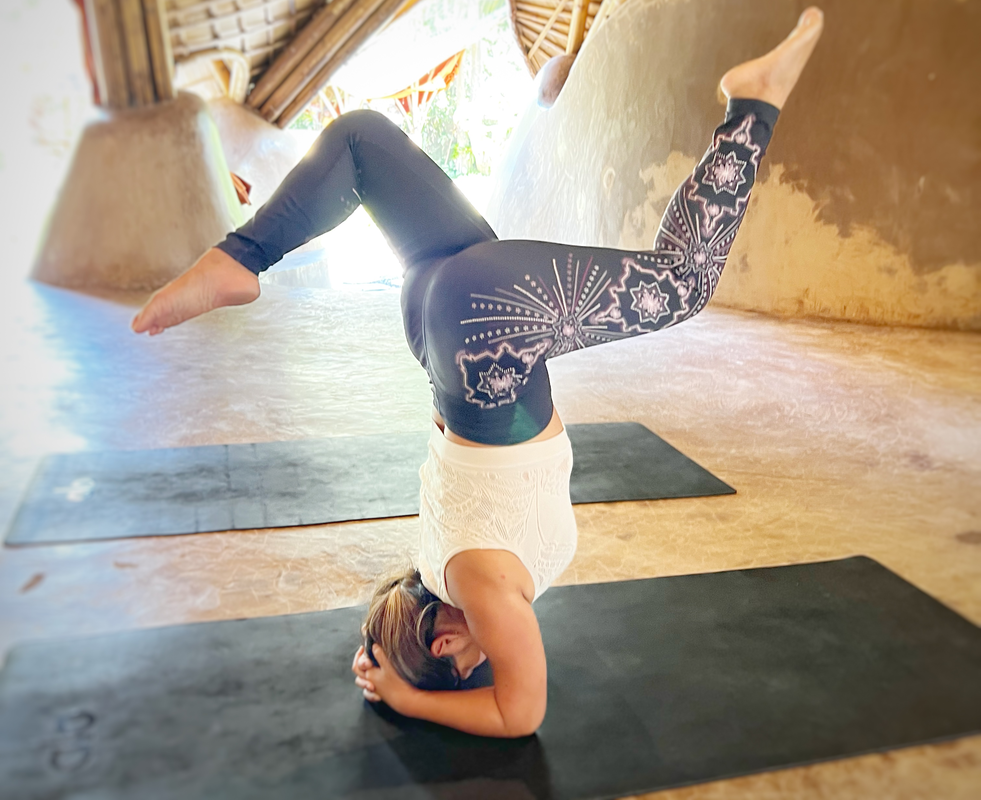|
Yoga is an amalgamation of asana (physical practice), pranayama (various breathing exercises), different forms of meditation, and philosophical frameworks passed down through countless lineages. Though the teachings may vary between the different lineages in terms of the methods of attaining enlightenment, and in some cases the relationship between consciousness and the material world, it is generally agreed that yoga is a word that represents thousands of methods used to transcend material existence into universal truth. Through yoga, we can come to know ourselves as pure consciousness, thereby freeing ourselves from the limitations of our material illusions, which include our narrow worldview. To put it in the simplest of words, we are the energy of pure infinite love (literally, energy!), but we cannot understand that yet because we are deluded by our material existence. This material existence includes our senses (sight, touch, taste, smell and hearing), how we process the information received through our senses, the interactions we have with one another, and the structures and systems that govern our day to day existence.
Today, much of the world remains stuck in the physical practice of yoga, otherwise known as asana, as we are programed to seek validation from the external environment. We put photographs of ourselves in beautiful shapes on social media to collect virtual likes; asana studios strip away spiritual philosophy to attract more students; we wear a particular style of sportswear to be accepted within the studios; we alter our diets so that we can fit into our pre-selected sportswear; the more contorted the shapes we can make with our bodies and the more intricate our acrobatics, the more followers we can amass. When we remain stuck in asana, what we fail to realize is that asana itself has become an energetic roadblock in the long and sacred path towards self-realization. We have cut ourselves off from the real magic and potential that is offered by the ancient wisdoms of yoga. To put it simply, we’re missing out! So why practice asana in the first place? Asana is an important part of yoga practice that brings us into awareness of the body. In Patanjali’s 8-Limbed Path of Yoga, for example, it is one of two methods that begins to transcend consciousness from the mind, into the body (the other method is pranayama). Let’s say that in order to know what IS, we have to first know what IS NOT. So therefore, we must first connect to the experience of the body wholly in its material form. Surprisingly, even though we exist within the vehicles of our bodies, most of us are only minimally aware of it. Many people do not have a strong felt sense of proprioception (awareness of the body in space) or interoception (sensing of the internal signals from the body). Recognizing when we are full, feeling our heart rate change in different situations, being aware of our breath, and noticing muscles tensing are examples of internal sensing that we are often not aware of in our day to day. Mostly, we live in our thoughts, in our minds. Asana initiates a release of conscious awareness from the constraints of the mind. It’s also important to acknowledge that the forms of asana popularized around the world today are only a small sample of the hundreds of practices that come under the umbrella of yoga asana. The system of physical postures that the modern world understands as yoga has been developed as a tool or a gateway to enter into deeper and more advanced methods of awakening. When a person begins to take their first steps along the path, it may not be possible to remain seated in stillness without being drawn back into the fluctuations of the mind. So the movement practice has been created to allow those who are new to yoga to experience the spaces between thoughts. Eventually, intermediate yogis may be able to set aside movement and anchor consciousness within the body while in stillness (usually seated, but there are variations here as well) for extended periods of time. And this is where the potential begins. Pranayamaopens the gates to the energetic body while pratyahara, or the withdrawal of the senses, allows us to transcend the physical and enter deeper states of meditation. In this altered state of consciousness, we may come to experience the physical nature of the body as an illusion. The world of form thus collapses as everything that we have ever known as true is deconstructed. We begin to take real and concrete steps within our material life to liberate ourselves from all that prevents us from living and loving without boundaries. So you see, asana is simply a tool to bring our awareness from the mind into the body as a way to transcend the body altogether. Asana is not the end goal of the path of yoga. Relaxation is not the end goal of the path of yoga. Feeling good is not the end goal of the path of yoga. In fact, once we are given a glimpse beyond the veil of ignorance, we are often faced with the uncomfortable truth that we can no longer live our lives the way we always have. In some ways, it can make life more difficult as we navigate the systems that are designed to keep us from seeing and being truth. What I have presented to you here is a personal account of how yogic wisdom has been transmitted to me. It is understood through the lens of my own unique personal experiences, which is one out of millions of transcendent experiences. I share it here to offer a glimpse into what the process might look like for someone. As a yogini and a yoga teacher, I believe that it is my responsibility to reclaim yoga from the grasp of the capitalist wellness industry that misrepresents sacred teachings in the name of profit and power. I admit that I have also not been spared from the influences of a system that exploited my own fears and insecurities and held me back from teaching yoga as a spiritual path for a short period of time. During the pandemic, I co-founded an organization in Singapore called Urban Yogis. Faced with fierce competition, I watered down the spiritual aspects of yoga to appeal to a wider audience. I feared being rejected by my conservative Muslim family, so I presented yoga as health and fitness practices. I sought external validation by partnering with well-known corporations and institutions in Singapore. But when it all came crashing down, it was yoga that brought me back into my power and reminded me of the vast and sacred wisdoms that are here for our liberation. In recent years, inclusivity in yoga has also come to mean that we must not offend people by weaving spirituality into the classroom space. If that is what we aim to do, then I would suggest removing the word “yoga” from the offerings. We cannot have people attending yoga classes offended by the inclusion of yoga spirituality. Conversely, I appeal to those who use the word “yoga” in their brands or as definitions of their professions to weave the yogic wisdoms into their offerings. If we present yoga as exercise, acrobatics, relaxation, or even nervous system regulation and refuse to offer our students an opportunity to understand its greater purpose, we do the tradition of yoga, our students, and ourselves, a great disservice. *** Follow me at the following channels:
0 Comments
Your comment will be posted after it is approved.
Leave a Reply. |
Archives
September 2023
Categories
All
|


 RSS Feed
RSS Feed
